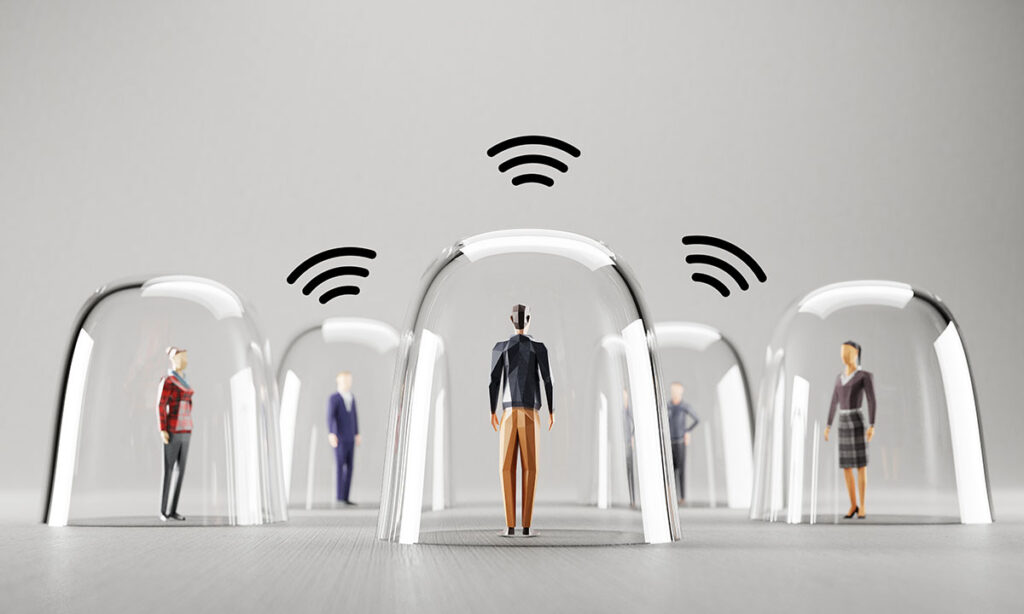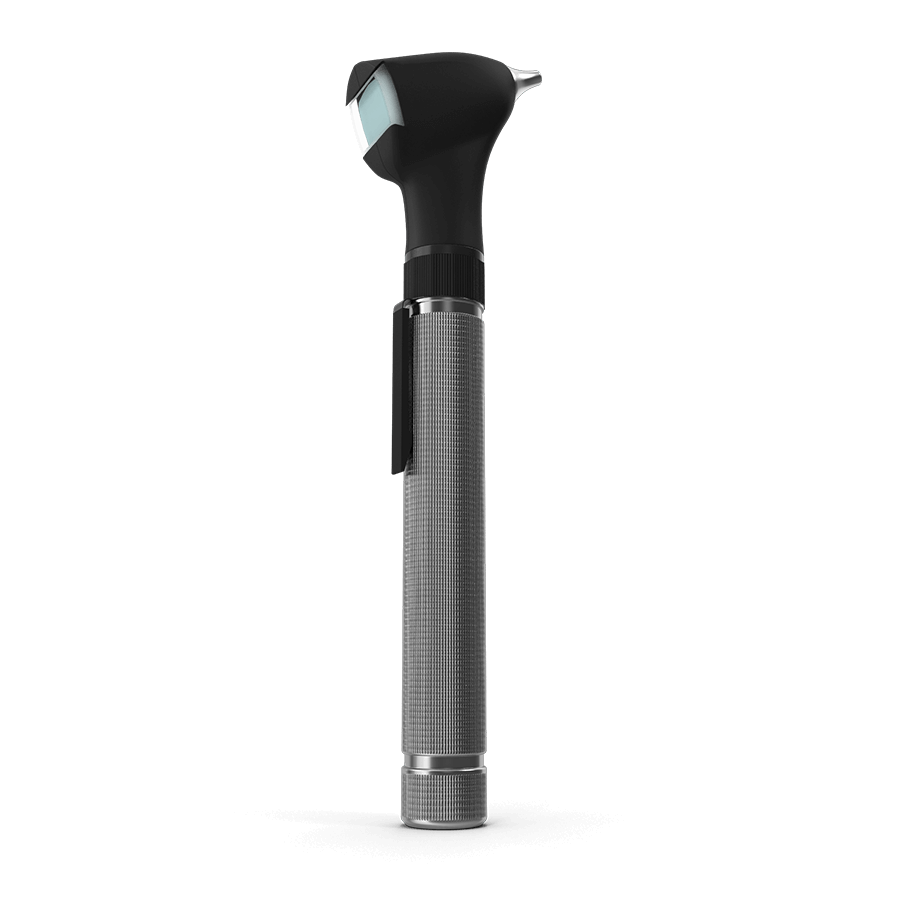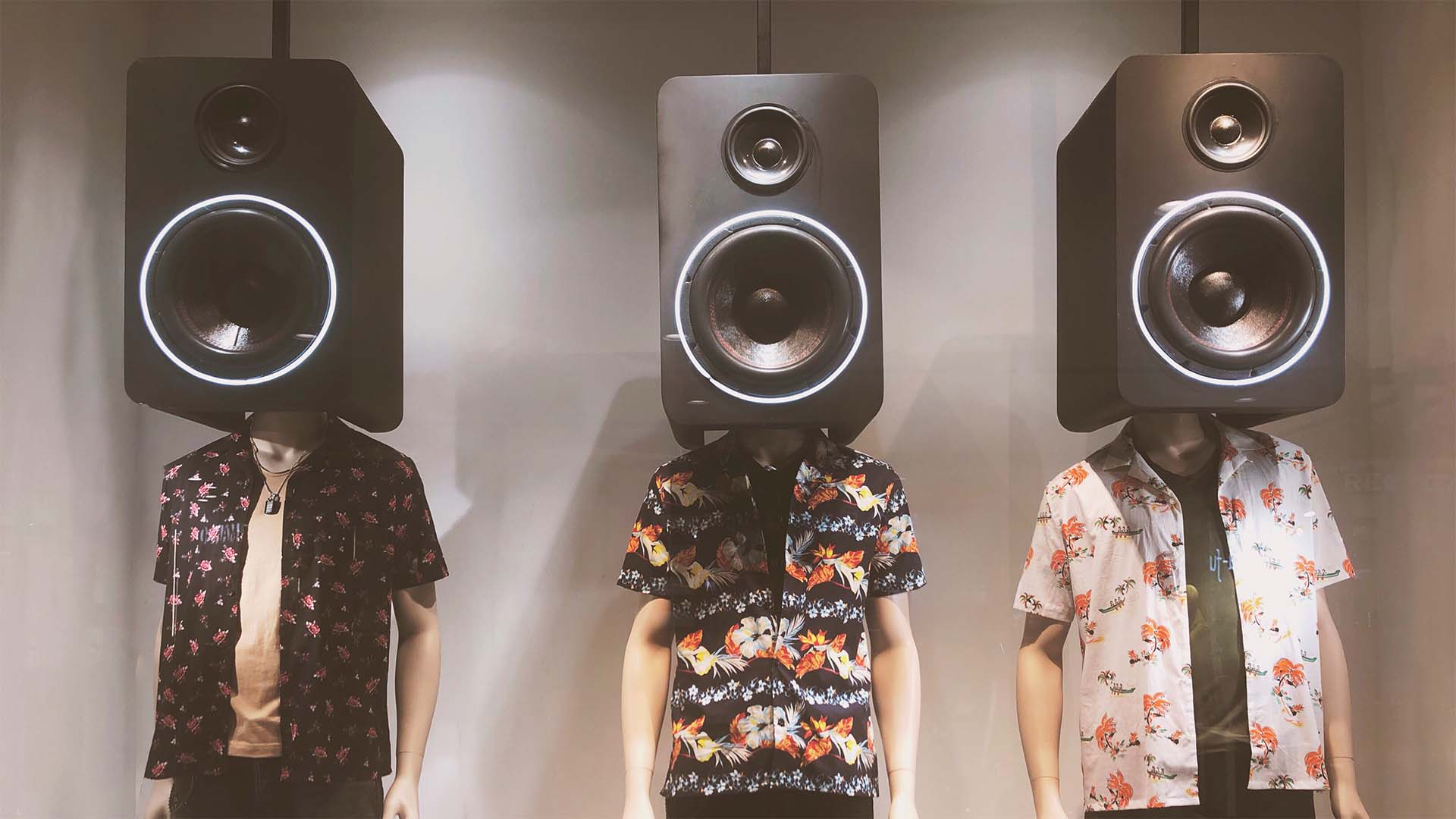Table of Contents
Picture this:
You’re at a lively restaurant in the Algarve, enjoying dinner with friends. The room is buzzing with laughter and clinking cutlery. As more people talk and the volume rises, you find yourself speaking louder and louder just to be heard. By the end of the night, everyone seems to be almost shouting across the table. This common experience is not just in your head – it’s a well-studied communication phenomenon known as the Lombard Effect. In simple terms, our voices automatically adapt to ambient noise levels. In noisy settings, we involuntarily raise our voice so our speech can cut through the background din . This reflex keeps conversations going in challenging environments, but it can also create new challenges – especially for older adults or anyone with hearing difficulties. In this article, we’ll explore what the Lombard Effect is, why it happens, and how it impacts group conversations. We’ll also look at real-world scenarios (think busy cafés or family gatherings) and share practical tips to communicate better in noisy environments. By understanding this “shouting reflex,” you can adapt your communication strategies and continue enjoying social moments without straining to hear or be heard.
What is the Lombard Effect?
The Lombard Effect – sometimes called the Lombard reflex – is a vocal phenomenon first described over a century ago. In 1911, French doctor Étienne Lombard noticed that his patients would unconsciously speak much louder whenever there was background noise . He published this observation as “the sign of the elevation of the voice,” and ever since, his name has been attached to the effect. Scientifically, the Lombard Effect is defined as an involuntary tendency to increase one’s vocal effort when speaking in loud noise . In plain English, when the environment around us gets noisy, we automatically talk louder and sometimes change our speech pattern to compensate. Importantly, this isn’t a conscious choice – it’s a reflex wired into our auditory and vocal system. Even moderate ambient noise (around 40–50 dB, about the level of a refrigerator hum) can trigger subtle voice adjustments . As noise grows, the adjustments become more pronounced: we raise our volume, elongate vowels, and may even speak at a higher pitch, all in an effort to remain audible. This built-in adaptation likely evolved to help us communicate effectively in natural settings – think of trying to alert someone over the sound of wind or waves. The Lombard Effect helps speech stay intelligible against background noise, which is why even modern listeners with normal hearing find it easier to understand someone who is projecting their voice in a noisy room than someone speaking softly . In short, it’s our body’s automatic volume knob, turning us up when the world around gets loud.
Why Do We Raise Our Voices in Noise?
There’s a good reason our brains prompt us to speak up in noisy places: it makes us more likely to be understood. When background noise competes with speech, it reduces the signal-to-noise ratio – the contrast between your voice (signal) and the ambient sound (noise). The Lombard Effect kicks in to boost your voice above the noise. This involuntary response is rooted in our auditory feedback loop. As we speak, we subconsciously monitor how we sound. If our brain perceives that the surrounding noise is muddling our words, it adjusts our vocal output – without any conscious effort. We start talking louder, enunciating more clearly, and even gesturing more (for example, exaggerating mouth movements or using hand signals) to get our message across . Essentially, your body is trying to overcome the noise barrier. This adaptive trait can be incredibly useful. For instance, in a crowded outdoor market or a busy train station, raising your voice a bit ensures that your “excuse me” or “hello” isn’t lost in the clamor. Studies have shown that these voice adjustments under Lombard Effect do improve speech intelligibility for listeners, up to a point . By speaking louder and changing the tone, you increase the chance that the important parts of speech (like consonants and vowels) stand out from the noise. It’s a clever human trick – one we usually don’t realize we’re performing. However, it has limits: if the noise keeps getting louder, we can only compensate so much before even shouting doesn’t work.
Tips for Communicating in Noisy Environments
The good news is that you can take practical steps to manage the Lombard Effect and improve communication in loud settings. Here are some tips to help you carry on conversations more comfortably when the background noise is less than ideal:
Choose strategic seating or spots: When possible, pick a quieter corner or a seat away from major noise sources (like the kitchen, band, or loudspeakers). In a restaurant, for example, sitting with your back to a wall can prevent noise from behind you, and facing your conversation partner helps you focus on them.
Face your conversation partner: Visibility is a big help. Ensure you can see the person’s face and lips when they talk, and vice versa. Facial expressions and lip movements provide context clues that supplement the sound. Standing or sitting directly facing each other – rather than side by side – makes it easier to lip-read and pick up on gestures . Good lighting can help you see these visual cues better.
Speak clearly (and listen actively): Rather than simply shouting, try to speak at a natural but slightly elevated volume, and enunciate your words. Shouting can distort your speech and strain your voice; a strong, clear voice with normal pacing works better. If you’re the one struggling to hear, don’t hesitate to politely ask others to speak a bit slower or clearer. Often, people will instinctively also turn toward you or speak more distinctly once they know you’re having trouble – leading to a better signal for you without just adding to the noise.
Limit competing noise: If you’re hosting a gathering, think about the background sounds – maybe keep music at a low volume or off during dinner conversation. In a home setting, turn off the TV or radio when people are talking. Removing even one source of noise can significantly improve everyone’s ability to communicate.
Take turns and pause: In group conversations, it helps if people avoid talking over one another. Although it’s not always controllable, encouraging a one-at-a-time flow (even informally by making eye contact and cueing the next speaker) can prevent the background from becoming a wall of indistinct chatter. As a listener, if you missed something, ask for it to be repeated or clarified rather than just nodding along – this cues others to the noise problem and often they will momentarily pause other chatter.
Use assistive listening technology if needed: There are devices and apps designed to help in noisy situations. Personal hearing amplifiers or modern hearing aids with “speech in noise” programs like the ones we, at audiocare, provide, use directional microphones and noise reduction to focus on the person in front of you. Even smartphone apps can act like mini hearing assistants by filtering out some background sounds. An audiologist can recommend tools suitable for your needs. Don’t shy away from using these – they can make a huge difference, turning a frustrating experience into an enjoyable one .
Take listening breaks: If you’re in a loud environment for a long period, give yourself short breaks in a quieter area. Stepping outside or to a calm foyer for a few minutes can help reset your ears and reduce fatigue . You’ll return to the conversation feeling less stressed by the noise. Similarly, if you feel your voice getting strained from speaking over the noise, pause and rest your voice (sipping water can help).
Plan ahead for acoustics: When possible, choose venues known for a quieter atmosphere (for instance, restaurants with carpets, drapes, or lower music levels). If you’re organizing an event, consider the acoustics of the room – high ceilings and hard surfaces make noise worse, whereas softer furnishings and smaller rooms keep noise down. A little foresight can prevent a lot of shouting.
By applying these strategies, you can significantly improve communication in noisy places. You might not eliminate all difficulties – a bustling pub will never be as easy as a quiet living room – but you can reduce the strain on your ears and voice. In group settings, often a few mindful adjustments by everyone (like facing the listener, or muting background music) can create a much more inclusive conversation for those who struggle with noise. If you consistently find it hard to hear even with these tips, consider getting a professional hearing evaluation. Many older adults discover that a quality hearing aid or assistive device, tailored to their needs, can restore the enjoyment of social gatherings by automatically dampening background noise and clarifying speech.

The Lombard Effect in Group Conversations
While the Lombard Effect helps each individual be heard, in a group setting it can become a double-edged sword. Imagine a dinner party or a crowded café where many people are talking. If the room’s background noise is high, everyone starts talking louder to stay audible – and this collective volume rise feeds on itself . One research paper describes it as a “positive feedback loop”: as ambient noise makes normal conversation difficult, people raise their voices, which increases the overall noise level, prompting others to also speak even louder . In essence, noise breeds more noise. Eventually, everyone might be practically shouting into each other’s ears, yet nobody feels like they’re having an easy conversation . We’ve all experienced this escalation – for example, at a restaurant table of eight, if a couple of people at one end start talking louder (due to a noisy crowd nearby), soon the whole table’s volume goes up. This phenomenon is sometimes informally nicknamed the “cocktail party effect,” though technically that term also involves the listening challenge in noise. The group Lombard effect can turn a lively atmosphere into a cacophony. Restaurants are a prime example: surveys show noise is one of the top complaints diners have . Typical sound levels in busy restaurants can range from about 65 dB up to 85 dB(A) during peak hours – the upper end is like standing next to heavy city traffic! At those noise levels, people naturally raise their voices to compete. This creates what some acoustical experts call “acoustical capacity” – essentially a limit to how many people can comfortably converse in a space before noise overwhelms conversation . When that limit is exceeded, the environment becomes socially unfriendly for conversation. You might notice side effects of this in group settings: conversations fragment into smaller clusters (since you can only talk to those closest to you), subtle speakers get drowned out, and everyone feels a bit more exhausted from the effort of speaking and straining to listen.
Why Noisy Settings Are Harder for Older Adults
If you find noisy gatherings especially draining or difficult as you get older, you’re not alone. Many older adults report that they can hear people talking, but cannot understand the words in loud places . This can happen even if a standard hearing test shows only mild hearing loss. Part of the issue is something called hidden hearing loss – subtle changes in our auditory nerves that don’t show up on a basic audiogram but do affect how we process speech in noise . In other words, the inner ear and brain might struggle to filter speech from background chatter, making it hard to follow one conversation among many. Aging also often brings a normal decline in hearing high frequencies, which are crucial for understanding consonants. The Lombard Effect can thus become a bit of a paradox for seniors: everyone is talking louder (which should help hearing them), but when multiple loud voices overlap, it can actually become more confusing due to distortion and the brain’s reduced ability to “tune in” to one voice. Moreover, older individuals tend to have a lower tolerance for loud sound than younger adults . What younger people perceive as a fun, noisy atmosphere might be physically uncomfortable or overwhelming to someone older. Scientific studies have quantified just how challenging noisy environments can be. For example, even people with normal hearing can understand nearly 100% of speech at a table when background noise is around 70 dB – but if that noise rises to 75 dB (only a small increase), speech intelligibility can drop to 0% . In other words, beyond a certain noise level, nobody can understand speech without shouting directly into someone’s ear. Now consider those with even a mild or moderate hearing loss: they need an even quieter background to follow conversation. One report found that individuals with moderate hearing loss couldn’t understand speech once ambient noise exceeded ~58 dB – a level common in many restaurants and social halls. This explains why an older person with hearing aids might still struggle in a noisy room despite the devices; the noise floor is just too high for clear speech, even with amplification. The result for many seniors is that noisy environments become exhausting and unenjoyable. They may withdraw from conversations or avoid loud restaurants and parties altogether. This social withdrawal can lead to feelings of isolation. It’s a serious concern: difficulty hearing in group settings is a top complaint and can impact quality of life for older adults. Recognizing this challenge is the first step in addressing it – both by making environments more hearing-friendly and by using strategies to cope with noise.
Conclusion
We all adapt to our surroundings in fascinating ways – the Lombard Effect being a prime example of how our voice responds to the soundscape around us. Group speech in noisy environments is a dynamic dance: as the volume rises, we instinctively join in by raising our own voice. This adaptation helps us connect and communicate, but it can also spiral into everyone speaking at full volume and still straining to converse. For older adults and others with hearing challenges, these situations can be particularly taxing. Understanding the Lombard Effect isn’t just a bit of scientific trivia – it’s a practical insight. It reminds us why noisy restaurants and parties feel so overwhelming and validates the experience of those who find them difficult. More importantly, it guides us toward solutions. By being aware of how noise affects speech, we can take conscious steps to break the vicious cycle: seeking quieter spaces, speaking clearly, and using technology or techniques to aid hearing. Whether it’s enjoying a family dinner, a community event in the Algarve, or a night out with friends, better communication in noise is possible. With a few adjustments and awareness, you can continue to be part of the conversation – without having to shout. After all, social connection is about the joy of hearing and being heard, and no one should miss out on that simply because the background is a bit loud.







